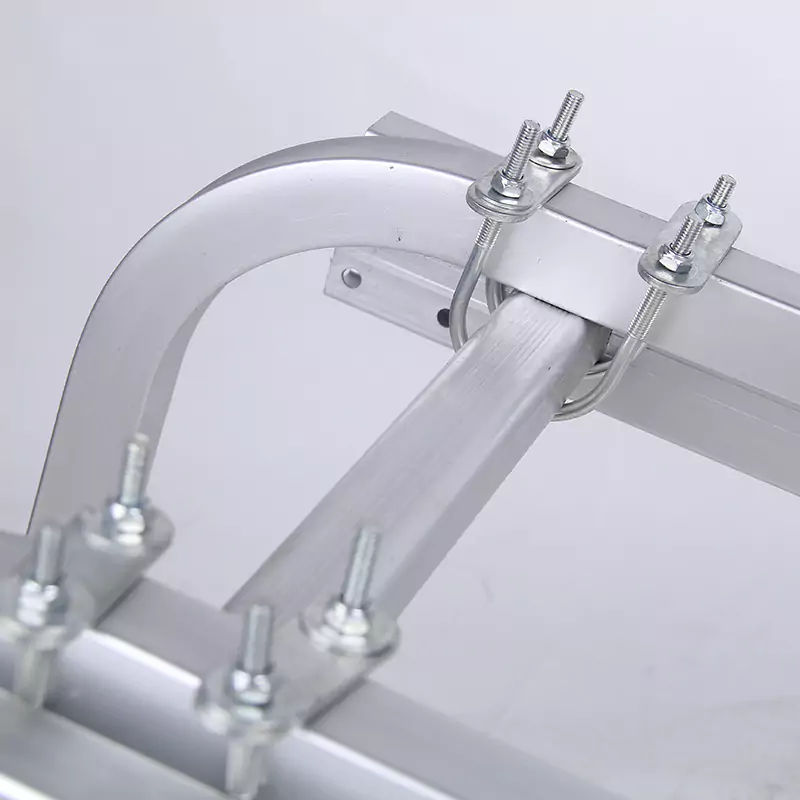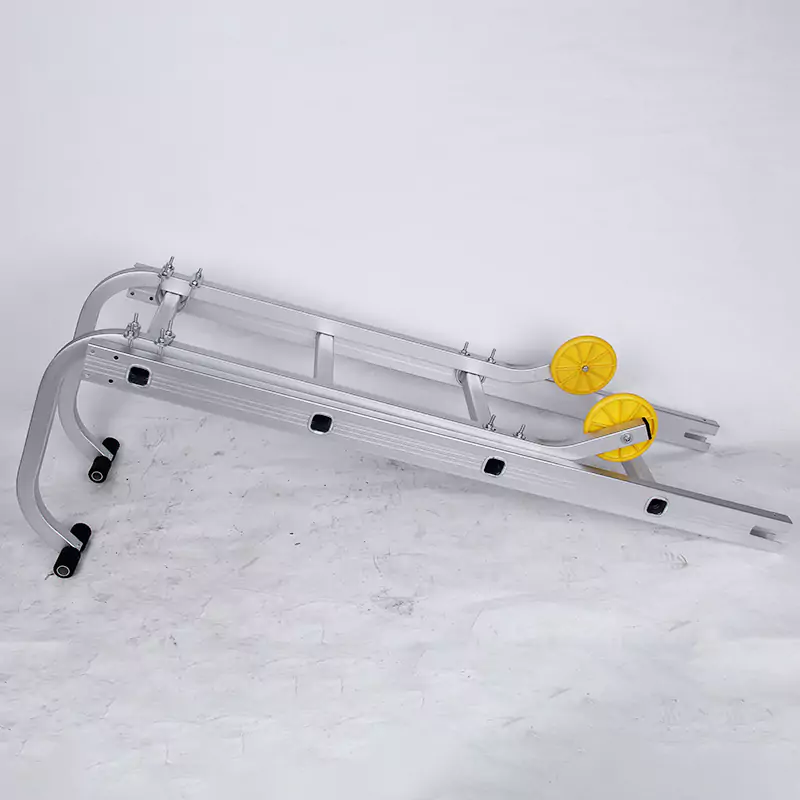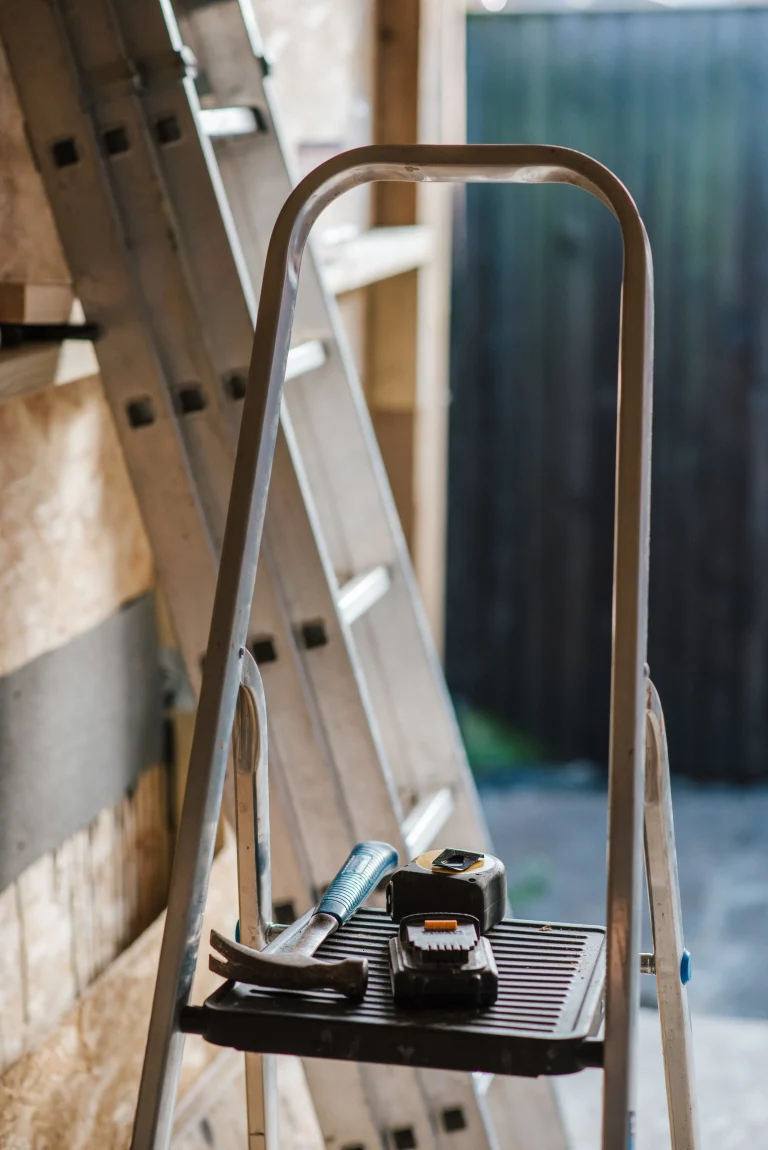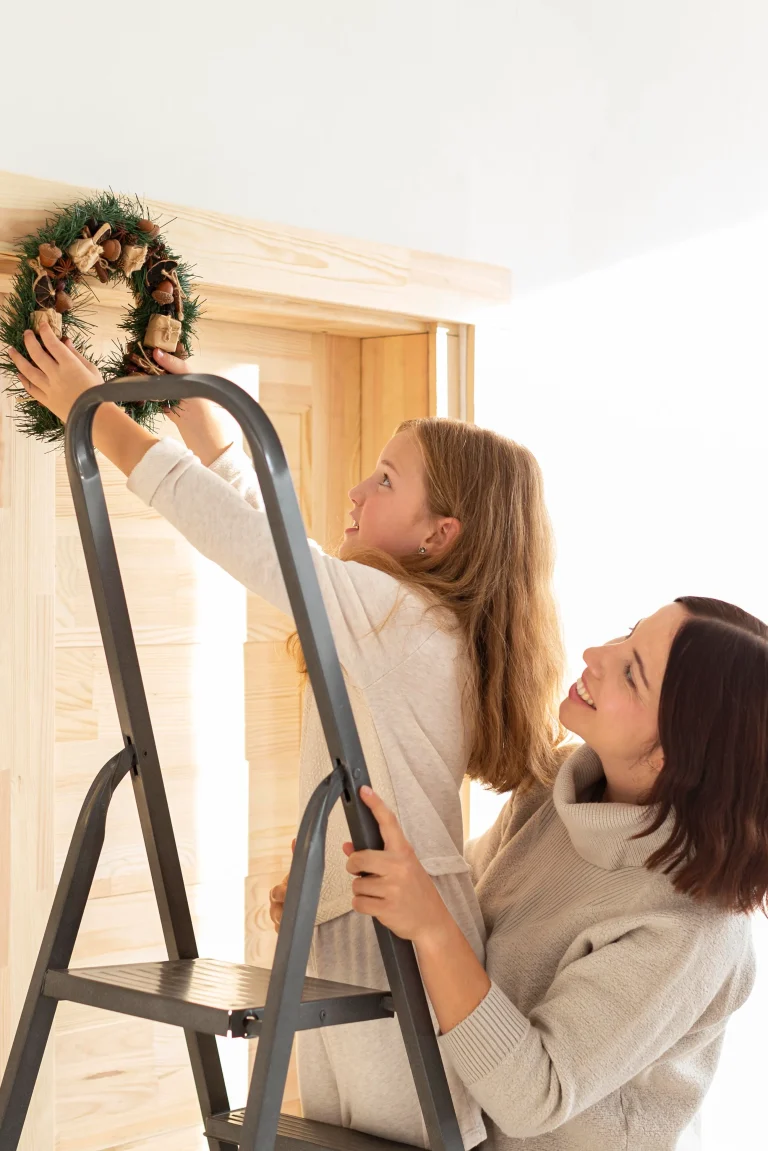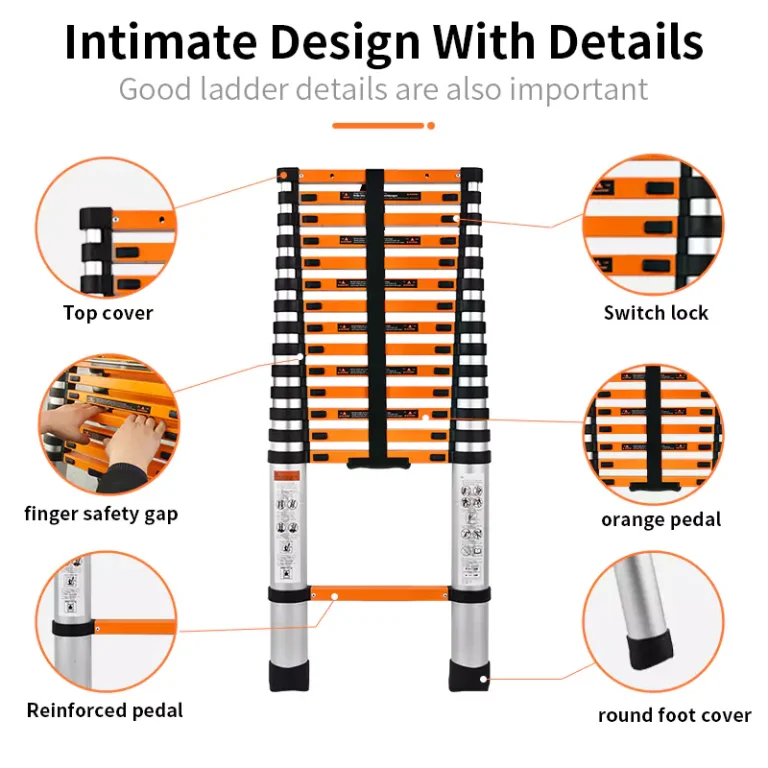Roof ladder hooks are super important for safe work up high. Their strength depends on the materials used. They also need to handle moving forces and bad weather. JADDUO’s ISO-certified hooks have strong designs and rust-proof coatings. These make them work great. Whether for building or fixing things, picking the right hooks keeps you safe when working on roofs.
What Materials Determine the Load Capacity of Roof Ladder Hooks?
Which Types of Materials Are Commonly Used in Roof Ladder Hook Construction?
The stuff a roof ladder hook is made of affects how strong and safe it is. Most good hooks use aluminum alloys or steel. Aluminum alloy is a mix of aluminum with bits of copper, silicon, magnesium, zinc, or manganese. It’s strong but light. It also fights rust well. This makes it perfect for outdoor jobs where rain and changing weather are common.
How Does Material Strength Affect Load-Bearing Performance?
How strong the material is decides how much weight a hook can hold. Good aluminum alloy is tough and bendy. It can support lots of weight if built right. Ladders with thick aluminum can hold hundreds of kilograms when made well.
The material’s tensile strength stops the hook from bending or breaking under pressure. This is key when forces spike, like when you shift your weight or climb fast. These moments can put more stress on the hook than just standing still.
Why Is Structural Geometry Important for Even Load Distribution?
The shape of the hook matters a lot. It spreads weight across the hook’s contact points. Curved or angled shapes reduce stress in one spot. They share forces across different parts. Strong hooks have extra ribs or supports. These make weak areas tougher. This stops the hook from failing under heavy loads.
What Standards Ensure Safe Manufacturing of Roof Ladder Hooks?
What Safety Standards Should High-Capacity Hooks Comply With?
Hooks need to follow global safety rules like EN131 in Europe, ANSI A14 in the USA, and GS in Germany. These rules set standards for materials, strength, and testing. They also require non-slip features. EN131 ensures ladders can handle a weight limit of 150kg for professional use. ANSI A14.3-2008 requires fixed ladders to support their maximum intended load, with rungs spaced 10-14 inches apart.
Why Is Precision Engineering Critical in Hook Fabrication?
Making hooks exactly right is super important. Every hook needs the same shape and size during production. If curves are off or surfaces aren’t smooth, the hook might not grip roof tiles well. This can cause falls.
How Does Quality Control Safeguard Load Reliability?
Quality checks start with picking raw materials. They continue through every step of making the hook. Extension ladders with strong welds and strict testing hold weight well, even in tough places.
How Does Mounting Method Influence Hook Performance?
What Are the Differences Between Mounting Techniques?
Roof ladder hooks can be bolted to ladder rails or clamped with adjustable fasteners. Bolted hooks are super strong. But they need exact alignment when installed. Clamped hooks are easier to add later. They might loosen if you don’t check them often.
How Do Fastener Type and Installation Method Affect Load Stability?
Fasteners must match the hook and ladder materials. Stainless steel bolts stop rust when used with aluminum ladders. You need to tighten bolts just right. Too tight can weaken the ladder. Too loose risks the hook coming off.
Good installation makes sure the hook’s base touches the ladder rail evenly. This boosts grip against slipping when you climb.
How Do Environmental Conditions Impact Hook Reliability?
Can Temperature Changes Affect Material Integrity?
Yes, they can. Very cold or hot weather affects some materials. Cold can make materials brittle. Heat can soften plastic parts, like wheels.
Aluminum alloys are great. They stay strong in temperatures from -20°C to 50°C. This makes them perfect for use all year in different places.
Why Is Corrosion Resistance Essential for Outdoor Use?
Hooks outside face rain or salty air in coastal areas. They need to fight rust. Aluminum alloy forms a natural shield against rust. Anodized coatings add extra protection. They keep the hook light and strong.
Rust hurts looks and strength, especially at joints where water collects. Good coatings stop this problem.
How Do Roof Angle and Surface Texture Influence Load Dynamics?
Steeper roofs pull harder on ladders. Smooth surfaces, like some shingles, make hooks slip easier. Wider contact areas or rubber pads on hooks help grip better. This lowers slip risk, even when you move fast or carry tools.
What’s the Difference Between Static vs Dynamic Loads on Hooks?
What Do Manufacturer Ratings Actually Indicate?
Static load ratings show the max weight a hook can hold still. This is usually in kilograms, like 150kg. Check the ladder’s weight limit, often 150kg for EN131 professional ladders.
These ratings assume perfect setup: a 75° angle, no wind, and balanced standing. Real life is messier, so ratings don’t always match actual use.
How Do Dynamic Forces Reduce Real-World Capacity?
Climbing fast or moving tools creates extra force. This can double the stress compared to standing still. If you and your gear weigh 120kg, quick moves might push 240kg or more on the hook. This could go past safe limits if the hook isn’t built with extra strength.
How Are These Principles Applied in JADDUO Roof Ladder Systems?
JADDUO makes reliable hooks that meet EN131, ANSI, and GS standards. They’re great for any job. Founded by Mr. Peng in Yongkang, China’s hardware hub, JADDUO sends products to over 50 countries. They serve construction, telecoms, and emergency teams. Their hooks use premium aluminum, follow ISO9001:2015 rules, and have CE/GS/EN131 certifications. They also offer custom OEM designs.
JADDUO’s hooks are light but tough. They’re practical and carefully made. They’re safe and don’t cost too much. The Aluminum Alloy Ladder Roof Hook Plastic Wheel is a great example. It’s strong and easy to move over roofs.
How Should You Maintain Your Roof Ladder Hook System Over Time?
What Inspection Protocols Should You Follow Regularly?
Check fasteners every month for tightness. Look at welds for cracks. Test wheel movement if your hook has them. Check for rust around joints. Clean off mud or dirt after each use. This stops buildup that could mess with grip or attachment points.
If you see damage, like bends or cracks, replace parts right away. Don’t risk using broken hooks.
When Does Wear Begin Compromising Safety Margins?
Any bend, even a tiny one, shows the metal is tired. This cuts load strength a lot when you move. Replace worn feet if they’re half gone. Also, check anti-slip surfaces. Worn treads mean less grip in wet weather. This is a big safety risk on steep roofs.
When Should You Replace Your Hook Based on Usage Frequency?
Daily pro users should replace hooks every 12–18 months. This depends on how hard you use them and the weather. Outdoor hooks last about 1 year. Indoor ones might last 2 years. Light users can stretch to 3 years. But store hooks inside, away from rain and sun, when not in use.
Which Features Define High-Capacity Roof Ladder Hooks Worth Buying?
What Criteria Should Professionals Use When Evaluating Hook Designs?
Don’t just look at weight ratings. Check these:
- Material type, like anodized aluminum
- Extra supports in the design
- Rust-proof coatings
- Certification marks, like EN131 or ANSI
- Fit with your ladder model
Also, think about easy-use features. Wheels or rollers help if you work alone on big roofs. JADDUO’s Aluminum Alloy Ladder Roof Hook Plastic Wheel adds mobility. It also protects tiles with its plastic wheels.
Why Choose JADDUO for Roof Ladder Hooks?
JADDUO’s hooks are built to handle tough jobs. They meet strict safety rules. Their designs spread weight well. They resist rust and weather. JADDUO’s quality checks ensure every hook is safe. Their hooks work with many ladders, making them a smart pick for pros.
Using JADDUO means safer work and fewer replacements. Their products are affordable but don’t skimp on strength. They’re a great choice for any roof job.
Tips for Safe Roof Ladder Hook Use
To keep your hooks strong and safe, try these:
- Set Up Right: Place the ladder at a 75° angle. Make sure hooks grip the roof tightly.
- Check Before Climbing: Test hooks for wiggles or loose parts before going up.
- Stay Balanced: Move slowly to avoid sudden forces. Keep your weight centered.
- Use Safety Gear: Wear a harness tied to a strong anchor, as ANSI A14.3 suggests for ladders over 24 feet.slideshare.net
These tips make your hooks last longer. They also keep you safe on the job.
FAQ
Q1: Can I install any roof hook onto my existing telescopic ladder?
A: No. Hooks must match your ladder’s tube shape and size. Check mounting hole spots too. Always read the maker’s guide before buying hooks.
Q2: Is it safe to use roof ladder hooks during rainy weather?
A: Yes, if hooks have non-slip features like rubber grips or rough surfaces. These work in wet conditions. Avoid storms, though. Wind can make any hook unsafe.
Q3: Do plastic wheels reduce load-bearing capacity?
A: No, if they’re made from strong plastics rated for heavy loads. Wheels help you move the ladder. They don’t weaken the hook if built right into the metal frame.

